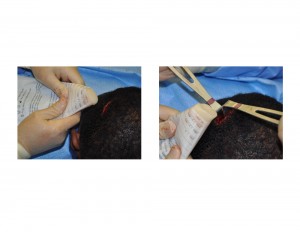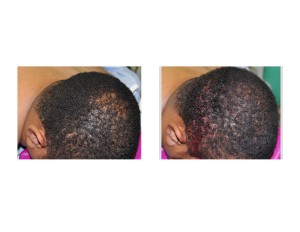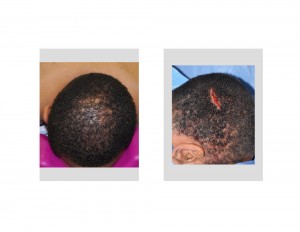Background: Flat spots on the back of the head or one-sided occipital flatness is not rare. While the back of the head is typically round, it is prone to numerous indentations and irregularities from in utero and neonatal influences. Since the back of the head is exposed to greater eternal pressures than the rest of the head combined, occipital deformations such as flat spots are not uncommon.
Correction of occipital defects or indentations can be done by a variety of bone augmentation techniques. The key differences are in what material is used and how it us introduced. Having performed many skull augmentations over the years there is no question that the single best method is a custom skull implant placed through a low occipital incision. But there still is a role in the patient for other forms of skull augmentation, particularly in unilateral occipital plagiocephaly. (flatness on one side)
Case Study: This 42 year-old male had always been bothered by a flat area on the back of his head. This had been there since he was a child. His mother said it happened because he laid on that side of his head since he was born and always turned back to it. It bothered him to the point that he would always wear a hat to hide it.


Highlights:
1) Smaller back of the head corrections for flat spots can be done by a near injectable bone cement technique. (injectable occipital cranioplasty)
2) This type of injectable cranioplasty requires a small incision and the bone cement is inserted through a funnel apparatus. This should not be confuse with a purely injection technique like that used for facial soft tissue fillers.
3) An injectable occipital cranioplasty requires shaping of the material as it sets from the outside through scalp molding.
Dr. Barry Eppley
Indianapolis, Indiana




